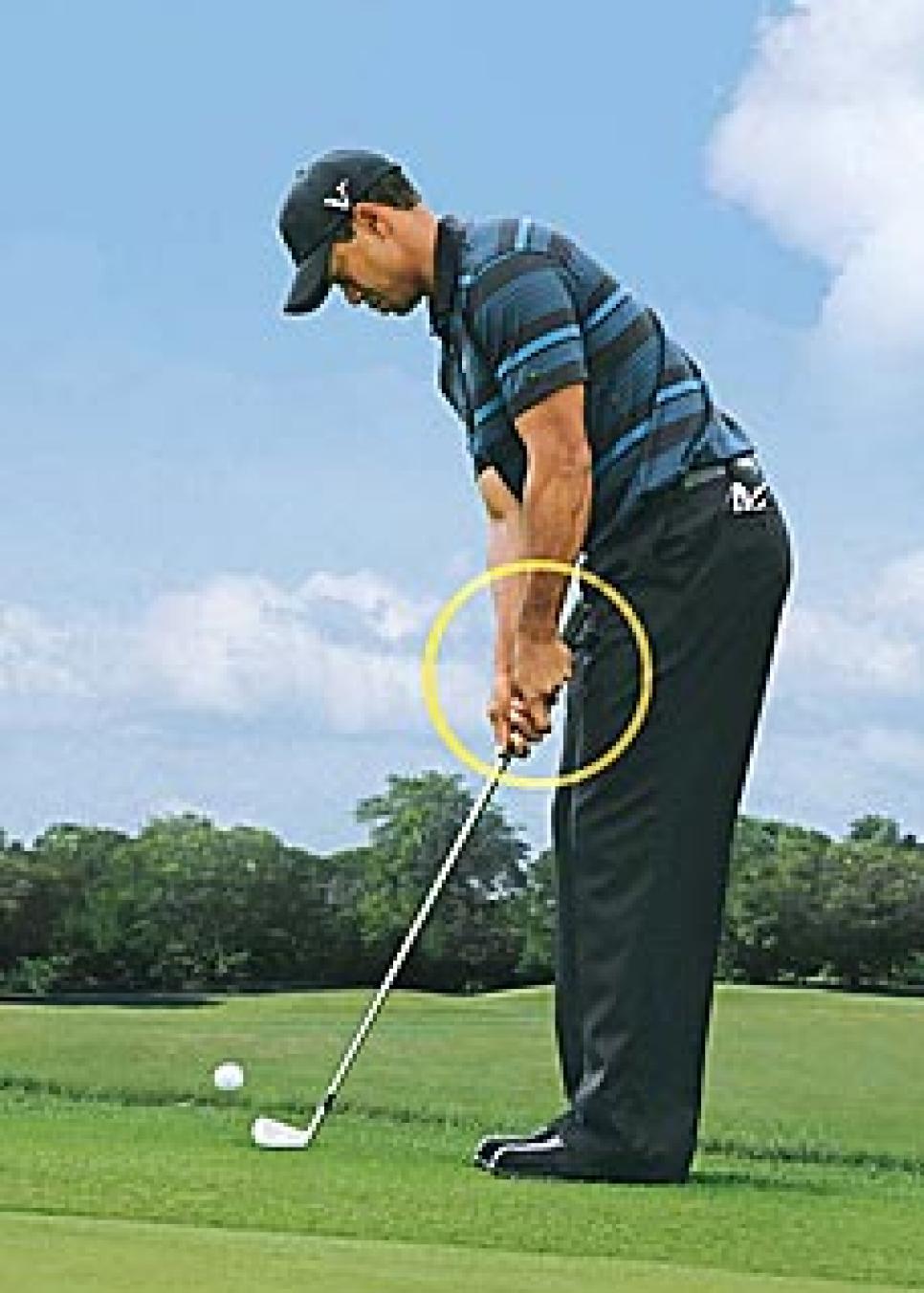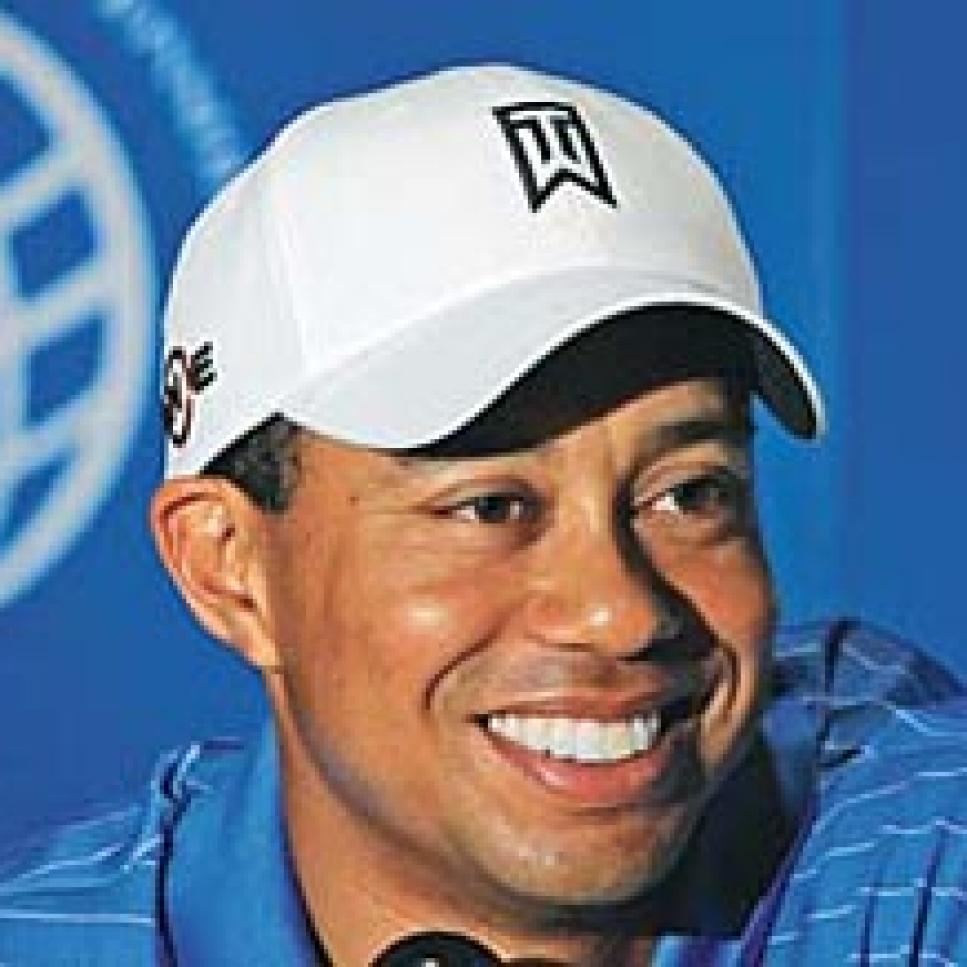Short Game
Try My 4-Iron Chip Shot

Grip for control
Choke down a few inches on the club, and use your putting grip.
My short game has improved tremendously just by adding more clubs to my chipping options. I've had particular success with a 4-iron on those long chips where you just want to land the ball on the green and let it roll out. I used that shot a few times in the British Open at Hoylake three years ago to get the ball on the ground quickly on those tricky greens.
I use my putting grip (a reverse overlap) because it helps keep my hands working together. Everything else is fundamental to good chipping. I set most of my weight on my left foot and position the ball back of center in a narrow but slightly open stance. That helps me make a descending blow into the back of the ball. But before I do anything, I read the break and pick a spot just over the fringe where I want to land the ball.
Just like on a putt, I try to keep my head still long after impact. That helps me hit the ball solidly and start it on line.
Holding Firm Greens
Swing to a high finish for a high shot
Course setup can dictate not only the kind of curvature you want on approach shots but also trajectory. When the greens are firm and the pins tucked, you need to hit it high to hold the green or get it in there close.
To hit the high ball, you have to produce more backspin, which is the result of more swing speed. Try gripping the club at its full length and making a bigger motion -- a higher follow-through and fuller finish. I also might move the ball up in my stance about half a ball and make a little different release to really throw it up in the air.
For example, my left wrist is bowed through impact on low shots. On high shots, though, I don't keep the back of my left wrist pointing to the ground as long. That different hand action can add loft for a high flight.
Depending on the lie, you might want to place a little more weight on your right foot at address. That will help you keep your weight behind the ball and not on top of it. Staying on top of the ball is more of a knockdown position for most players.
ASK TIGER
Mechanical Progress
__Q: What was the biggest flaw that crept into your swing when your knee was hurting?
*-- Cullen Alexander, Odessa, Tex. *__
A: I could never drive into my left leg through the swing. If I did, it really hurt. I feel great now and can do the things Hank has wanted me to do.
Equipment Update
__Q: Have you put anything new in the bag this year?
*-- James Vincenzo, Phoenix *__

A: I'm using the Nike SQ Dymo 380 Prototype with 8.5 degrees of loft, the Nike VR TW blades (2-iron through pitching wedge), the Nike 56-degree VR sand wedge and 60-degree SV L-wedge. I've also been experimenting with some different driver shafts.
Game Face
__Q: How long does it take you to get over a bad round, especially at a major championship?
*-- Lindsey Velez, Winnetka, Ill. *__
A: Usually I need about 10 minutes after a round to decompress and collect my thoughts. Once I do that, I'm fine to talk to the media and do the other things I have to do. Sometimes it's tough because we don't have a set cooling-off period like most other sports do.
Tiger Stats
3 ROUNDS Woods has posted over par in 2009, through the Memorial Tournament. He leads the PGA Tour in scoring average at 68.88.
64 PERCENT of the time Woods has finished in the top 10 of majors he has played as a professional -- 30 of 47 through the 2009 Masters.
Tiger Woods writes instruction articles only for Golf Digest. Ask Tiger a question.
Mark Soltau is a contributing editor to Golf Digest and the editor of TigerWoods.com.